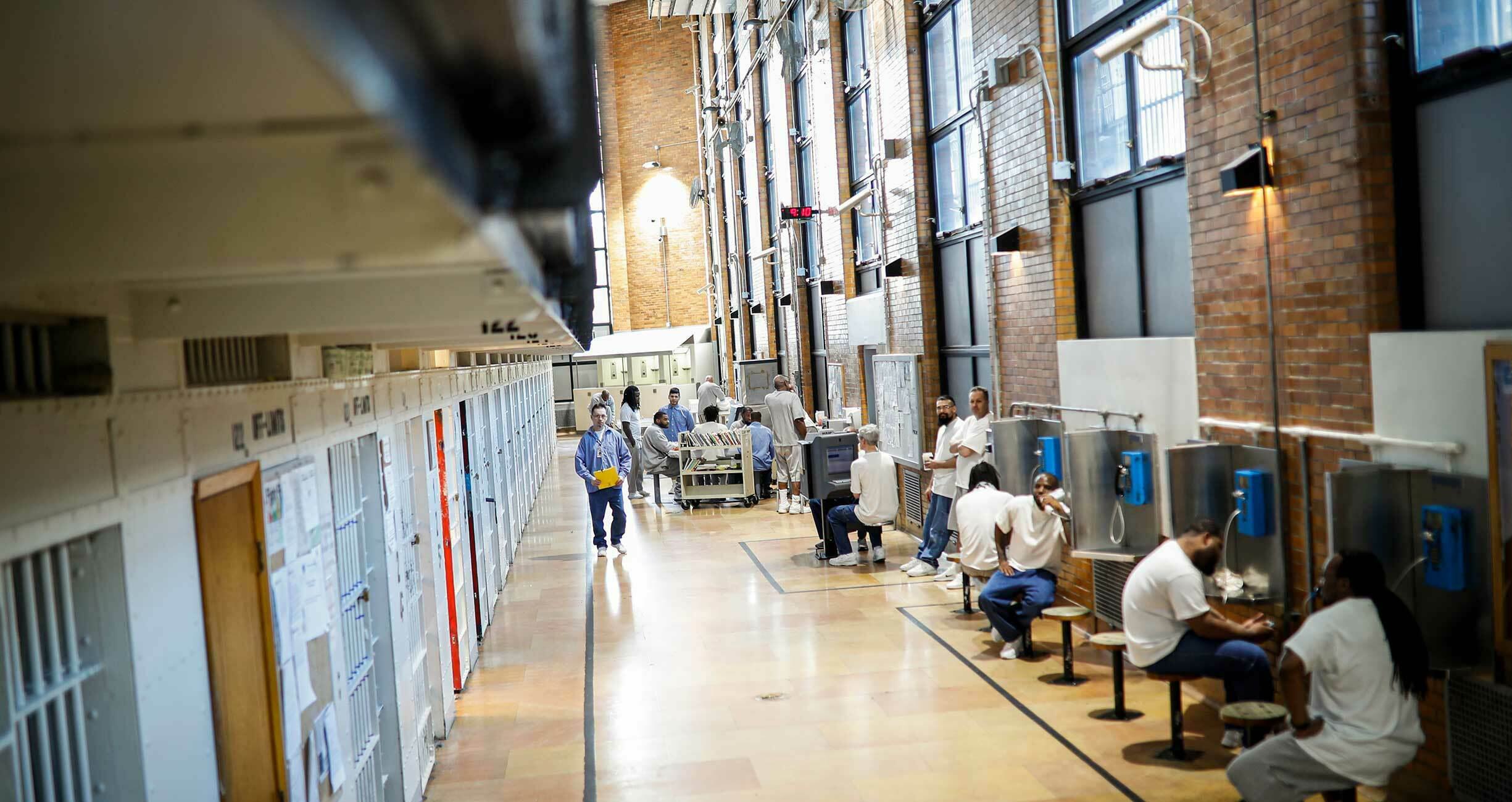City Jail Populations Are Falling, So Why Are Their Budgets Increasing?
Fewer people are being locked up, but bloated jail budgets are taking resources away from communities.
Jail populations in big cities have declined nearly 30 percent in the last decade, fueled by a growing recognition of the brutal realities of jail. Its injustices are crystallized in the stories of people like Kalief Browder—who, at 16, spent three years in jail awaiting trial for allegedly stealing a backpack and died by suicide after his release.
Reducing the number of people in jail is a step toward dismantling mass incarceration and its harmful implications for public health and wellbeing. But even though fewer people are being locked up in jails in big cities, local governments are not spending less on jail. In fact, most cities are spending more—much more.
New York City currently spends $429,781 to incarcerate one person in jail for a year, up from $182,555 a decade ago. With a budget of $2.3 billion, it spends more than any other city—to lock up fewer than 5,500 people. Even though its jail population dropped 39 percent from 2011 to 2021, Seattle spends $154,778 to lock up one person for a year, up from $78,924 10 years ago. The trend continues in Chicago, Los Angeles, Miami, and in other cities across the country. Although fewer people are behind bars, jail budgets continue to grow.
In 48 large cities evaluated by Vera in a new report, a combined $9 billion will be spent this year to incarcerate about 109,000 people in jail—$1 billion more than was spent in 2011, when these cities had a combined jail population of 150,000.
And this money is not going toward improving the conditions of confinement. Rather, jail budgets increased an average of 13 percent between 2011 and 2021 largely because local officials haven’t reduced the number of people on jails’ payrolls. Employee salaries account for a staggering 73 percent of a jail’s budget.
Some cities—Albuquerque, Charleston, New York City, and Washington, DC—have made strides toward downsizing their jail populations and now incarcerate half as many people as they did a decade ago. However, their commitment to decarceration has not been paired with lower spending. In nearly two-thirds of the cities Vera analyzed, emptier jails now employ more people. In Albuquerque, for example, the jail population has decreased 52 percent, but staffing has increased 18 percent.
Though some local governments have committed to scaling down mass incarceration, none have acted to slash their oversized jail budgets. The opportunity cost is high, since the billions of dollars spent to maintain jails is money that can’t be used to support hospitals, schools, and other social services. In many cases, local governments are investing more heavily in jails than they are in services that could make communities safer, healthier, and more resilient, such as affordable housing or substance use and mental health treatment programs.
The project of ending mass incarceration will not be complete until we stop investing in mass incarceration. The more than 3,000 jails nationwide cost taxpayers a staggering $25 billion per year, but the social costs extend far beyond the billions cities spend. Incarceration worsens overall health outcomes for entire communities, from increasing the risk of overdose to driving the spread of infectious disease. It separates families, further impoverishes people, and fails to make communities safer.
Although the injustice of a bloated jail budget pales in comparison to the injustice of the human toll of incarceration, it is still an injustice. This spring, city and county councils will review executive budgets that will propose to maintain jail spending despite steep, sustained jail population declines. It’s time to disinvest in jails and instead invest in services that communities need, like better health care, schools, drug treatment programs, and social services that help communities thrive.
